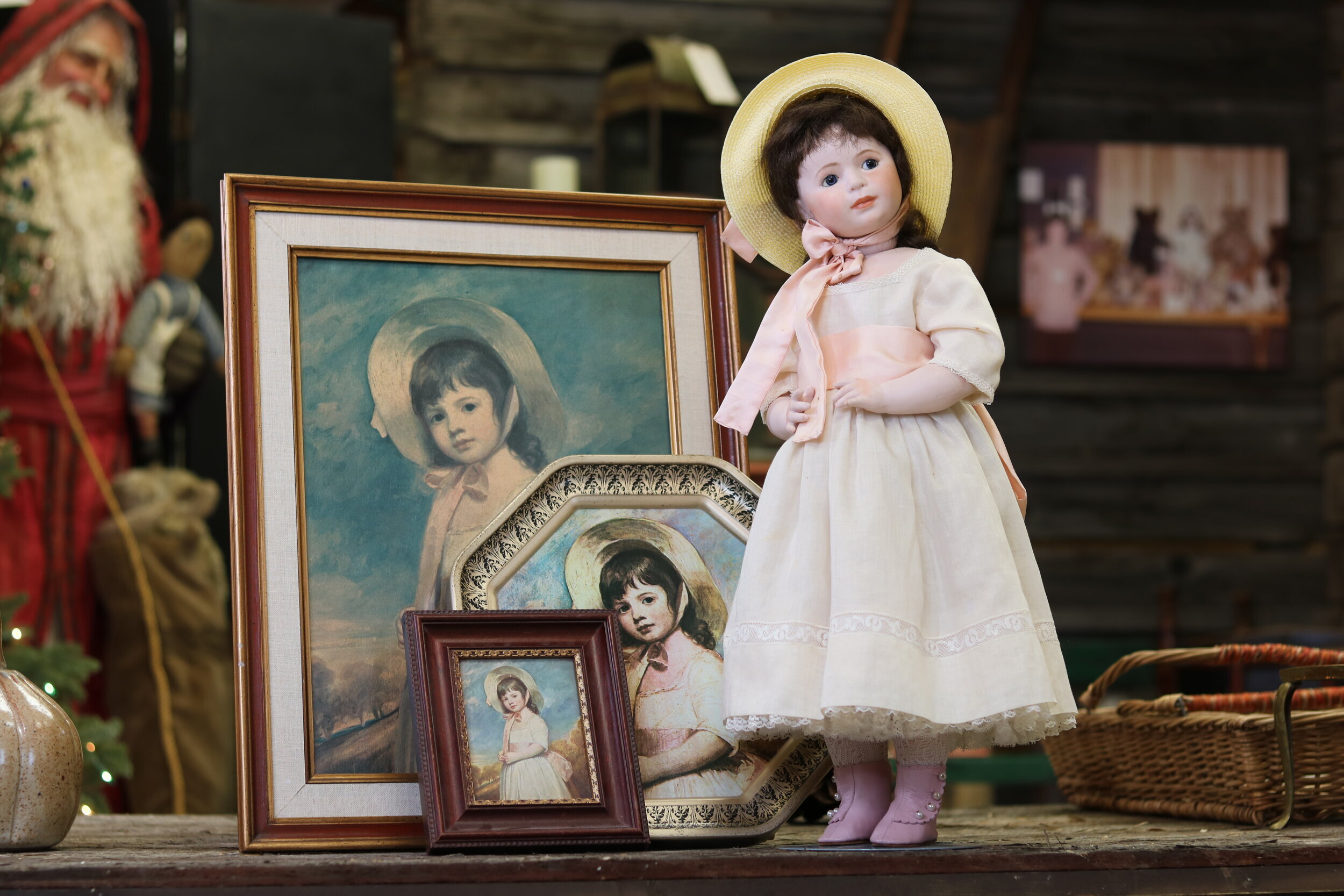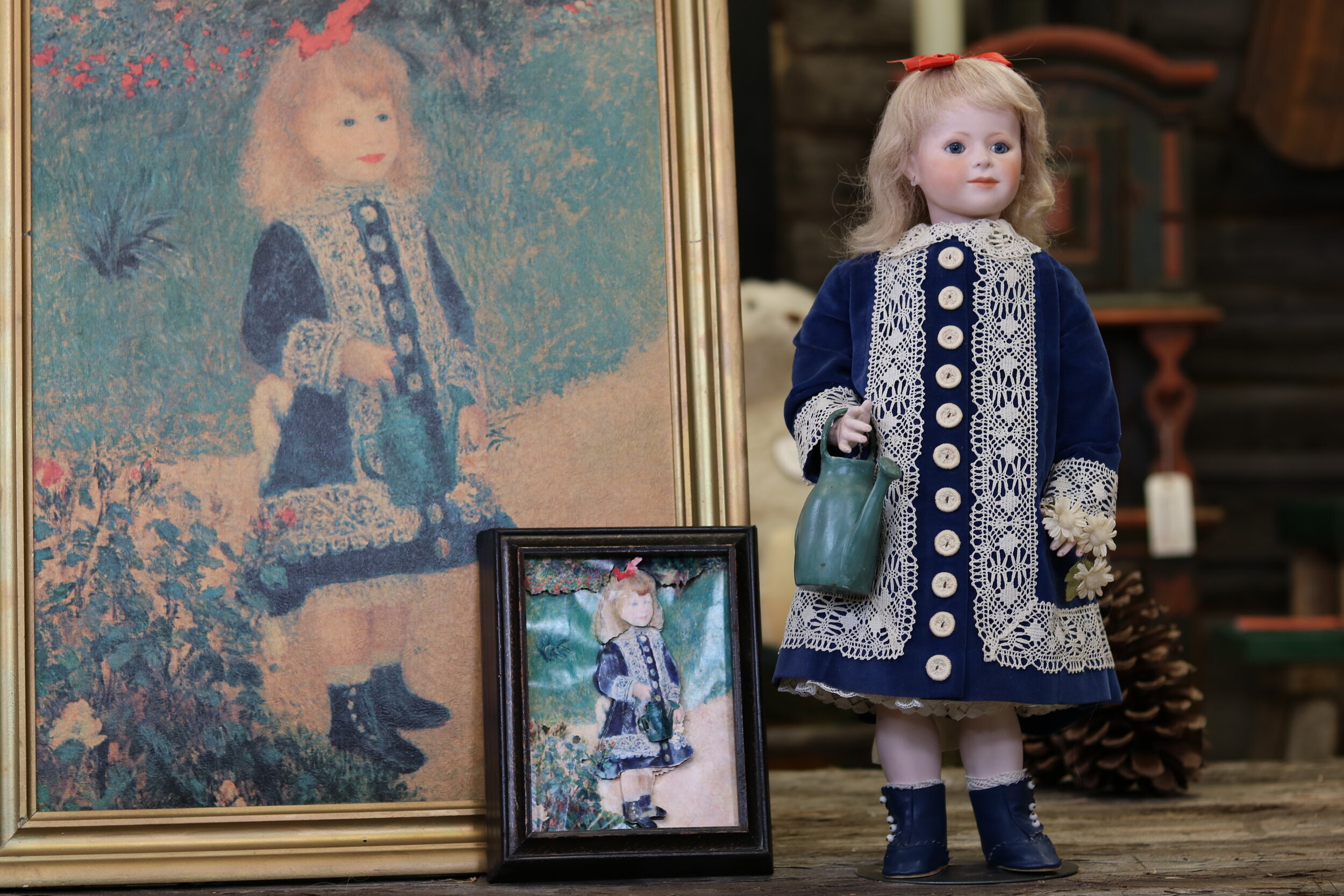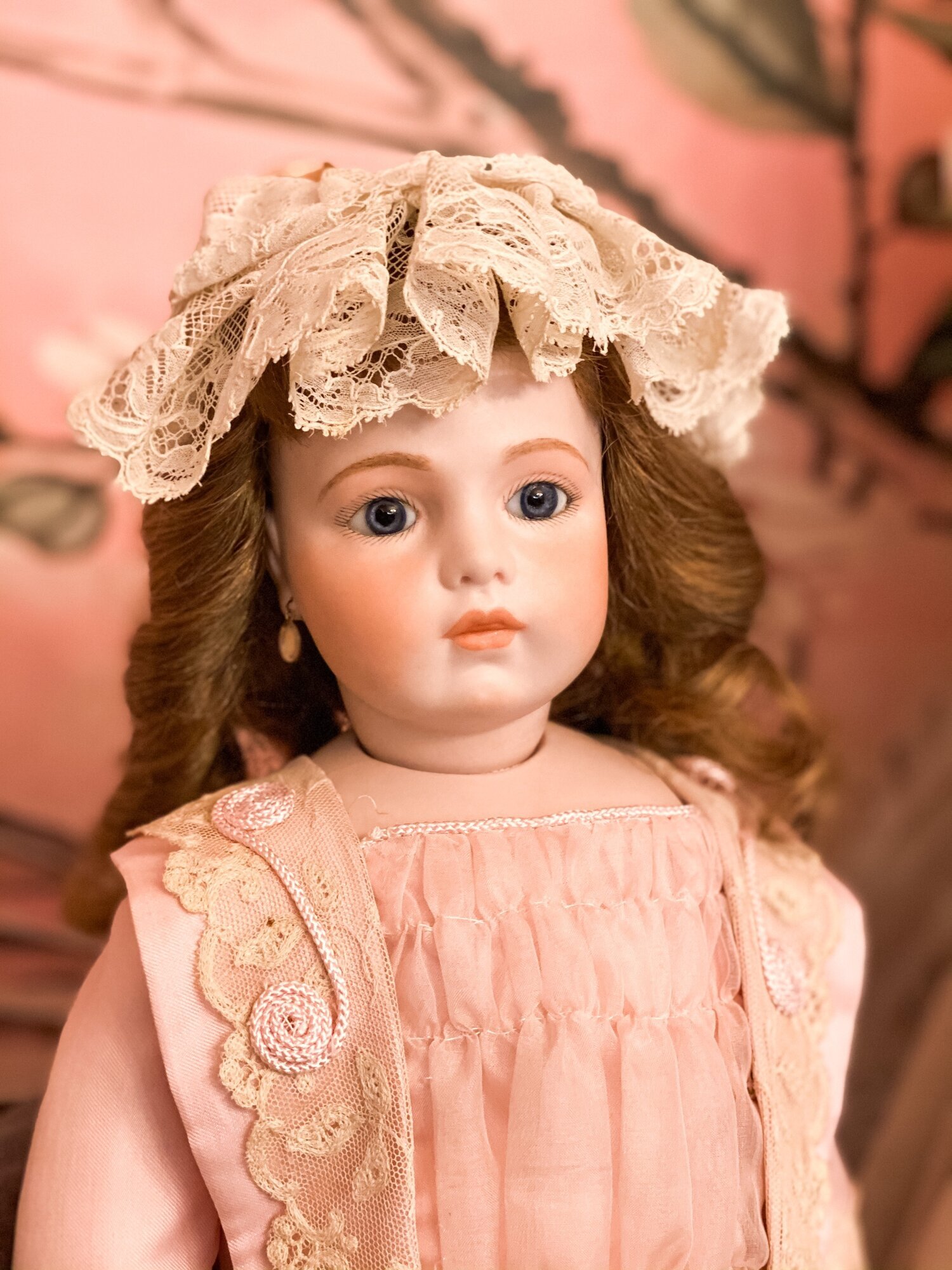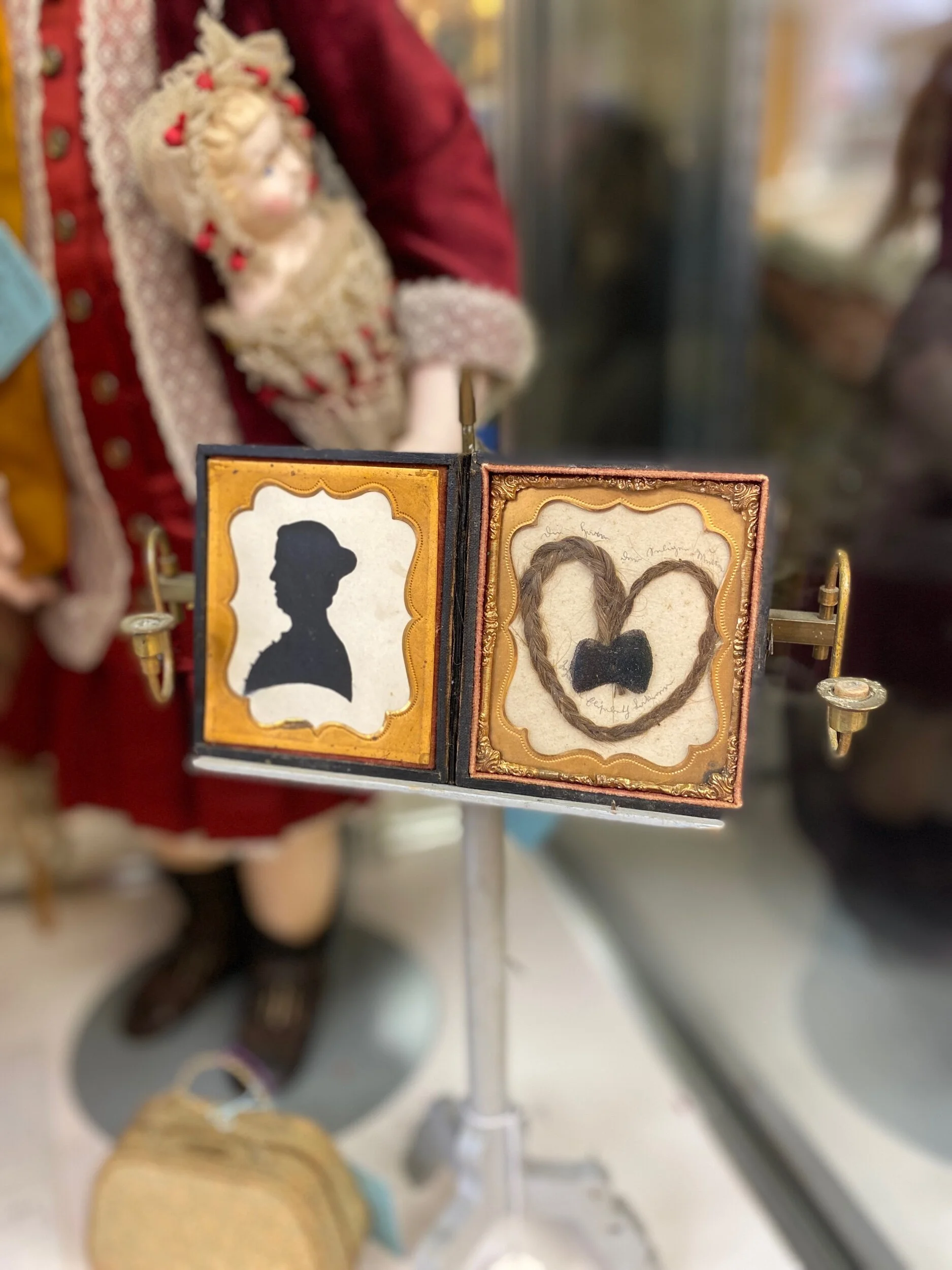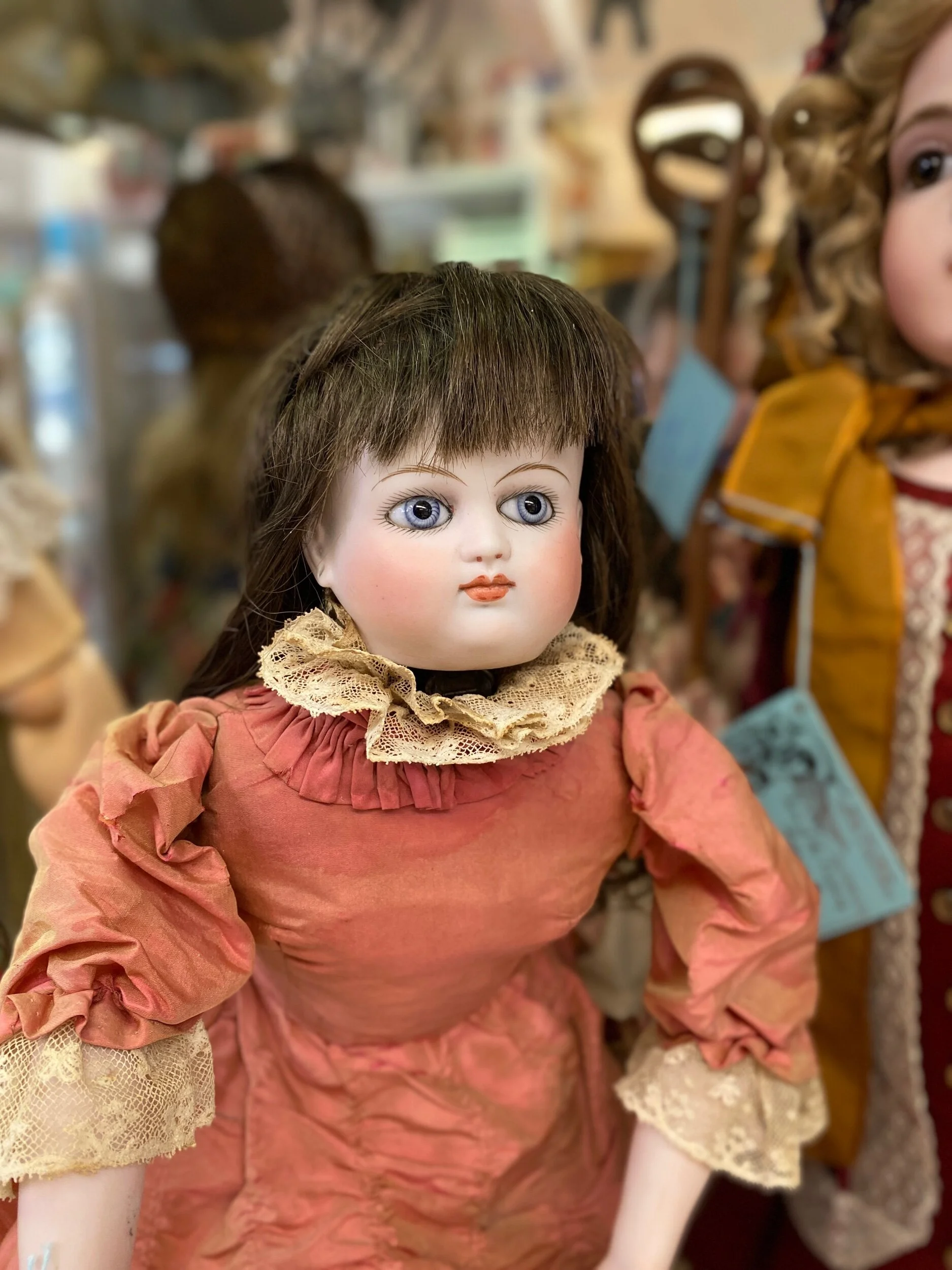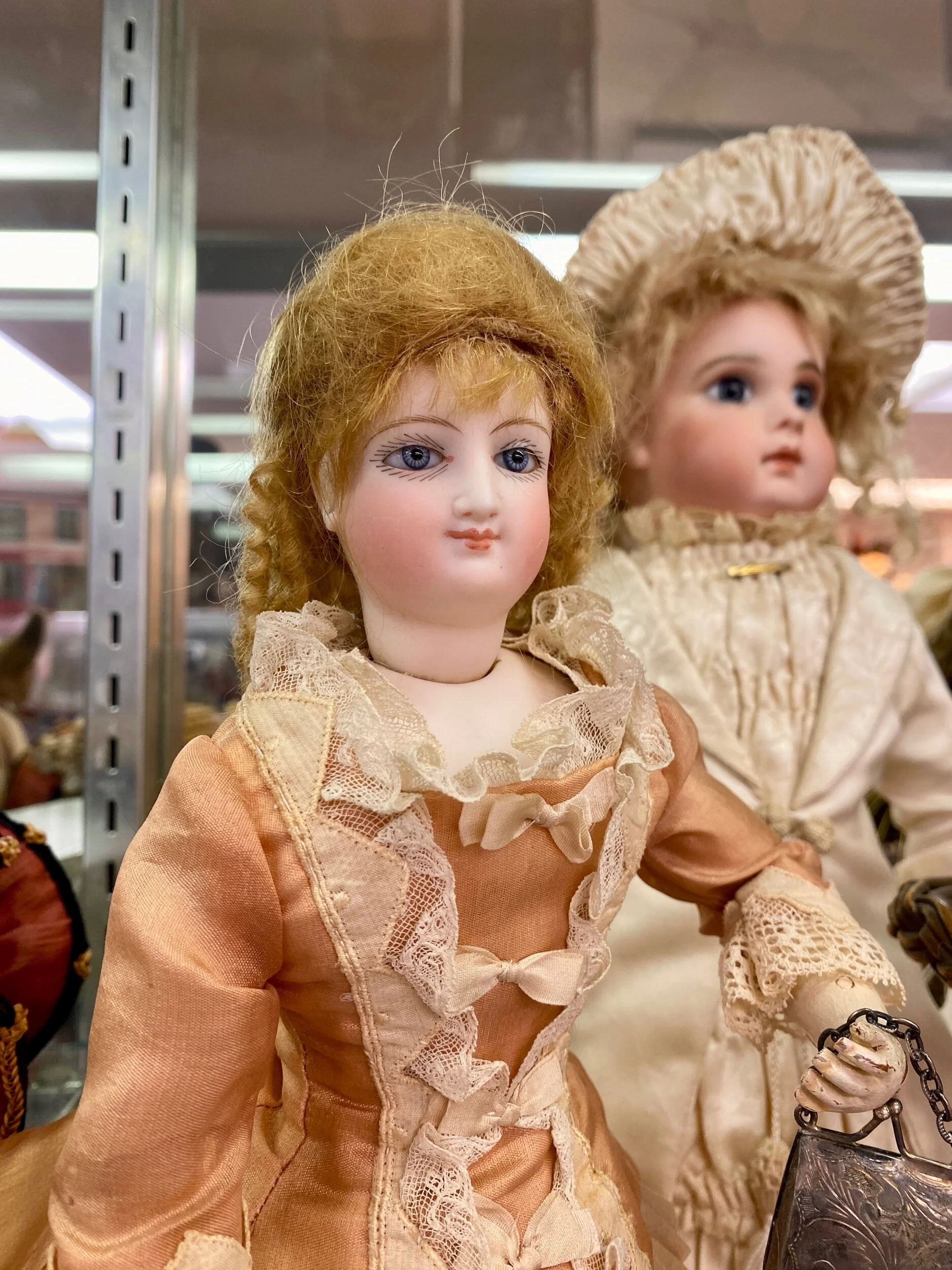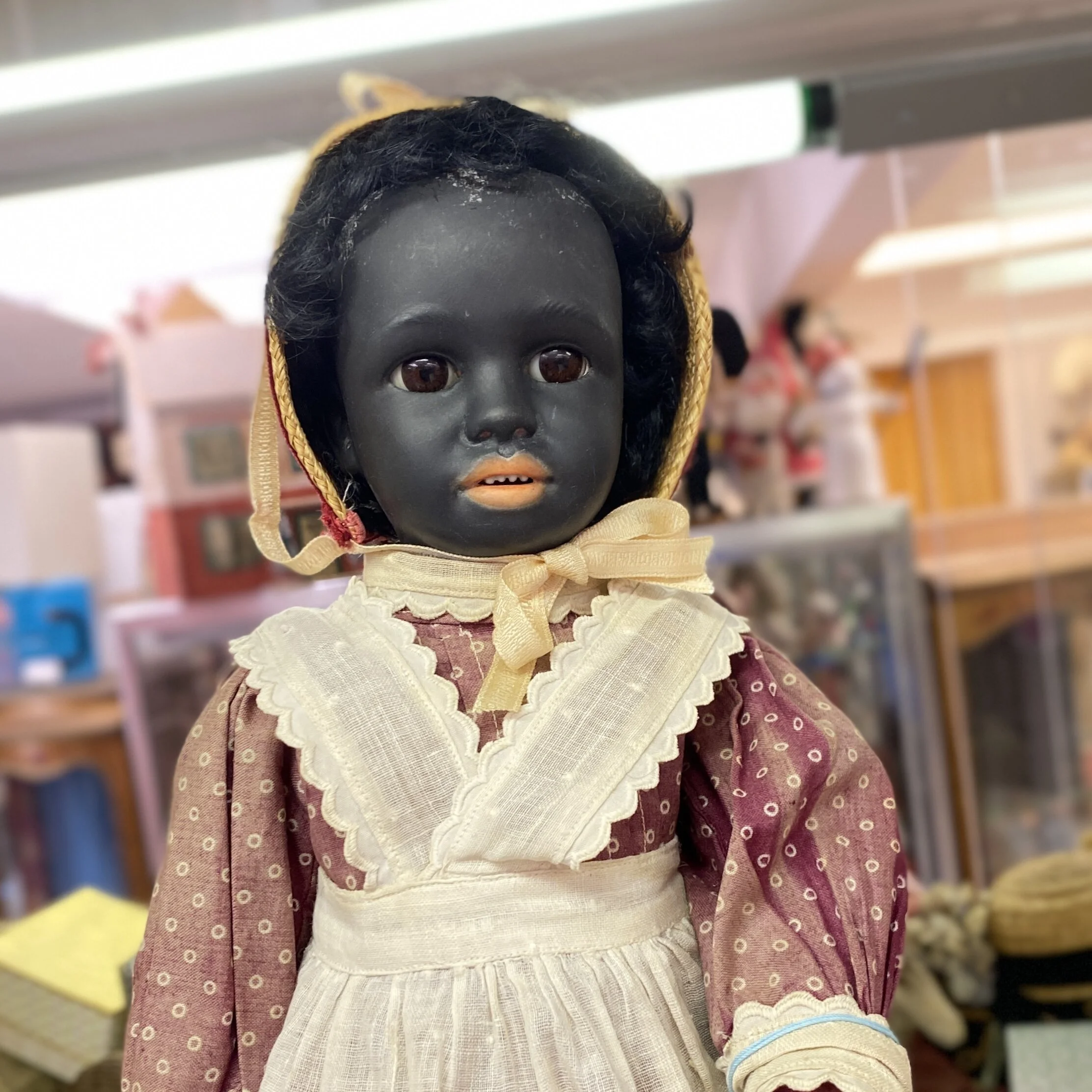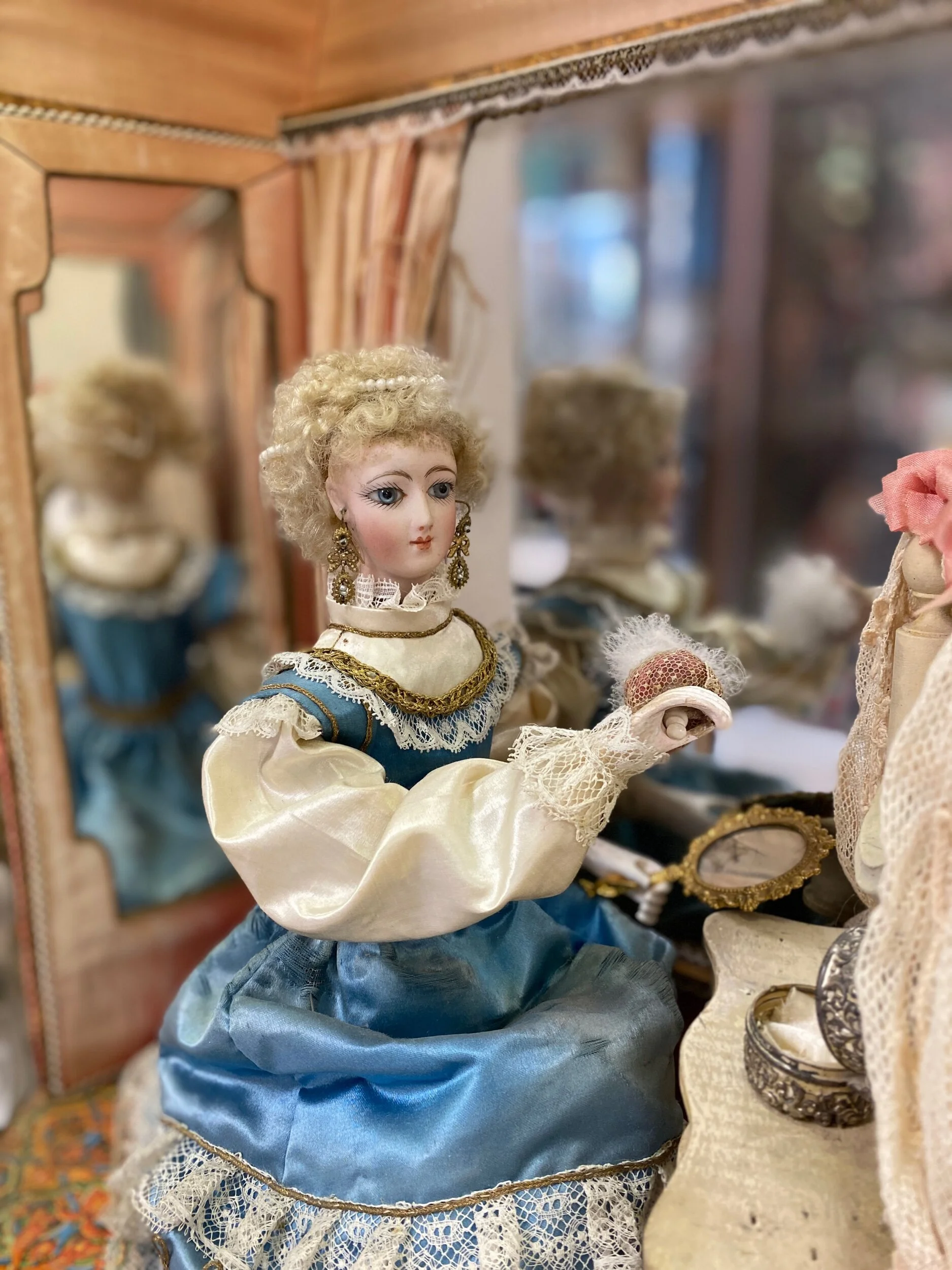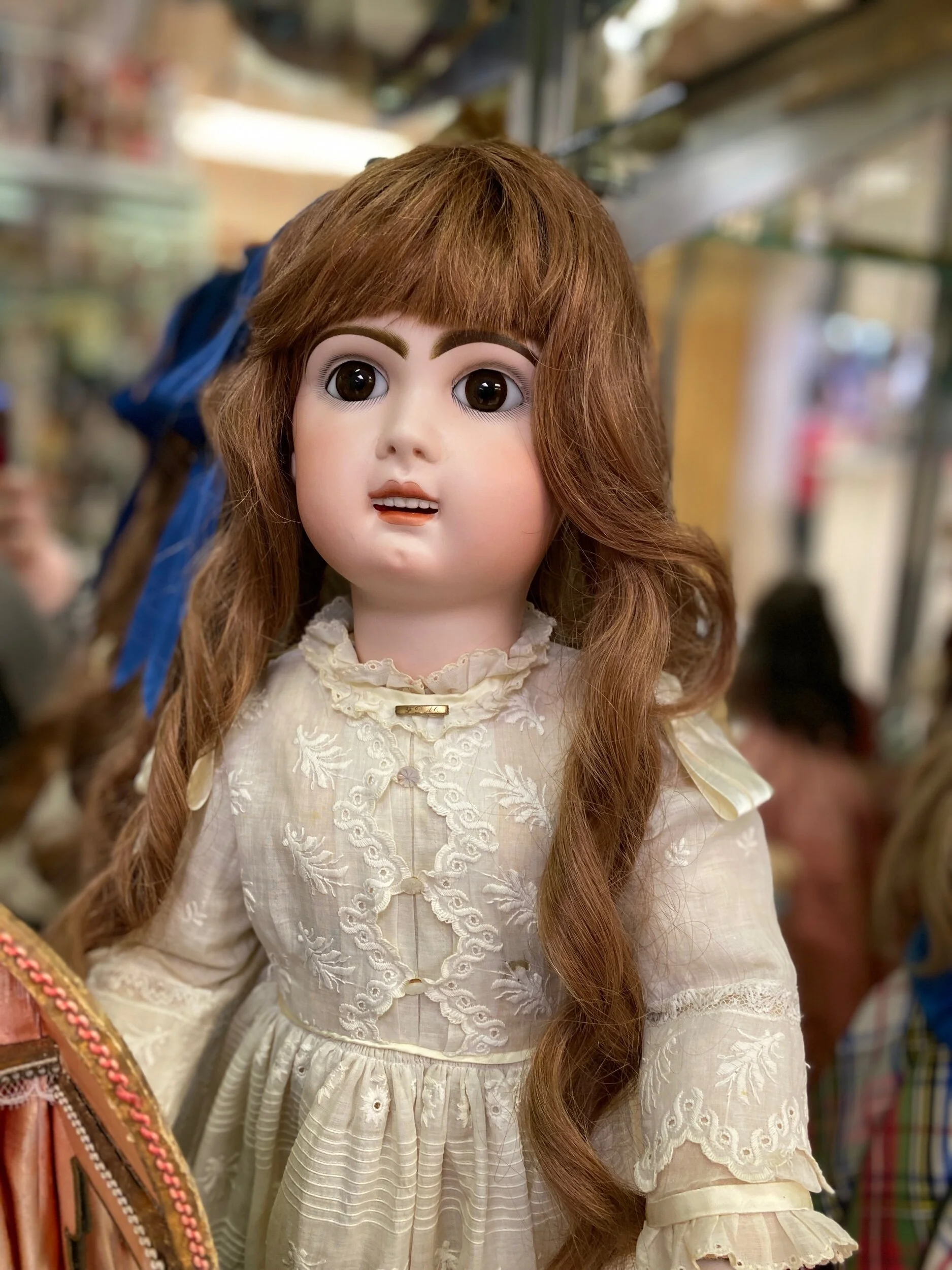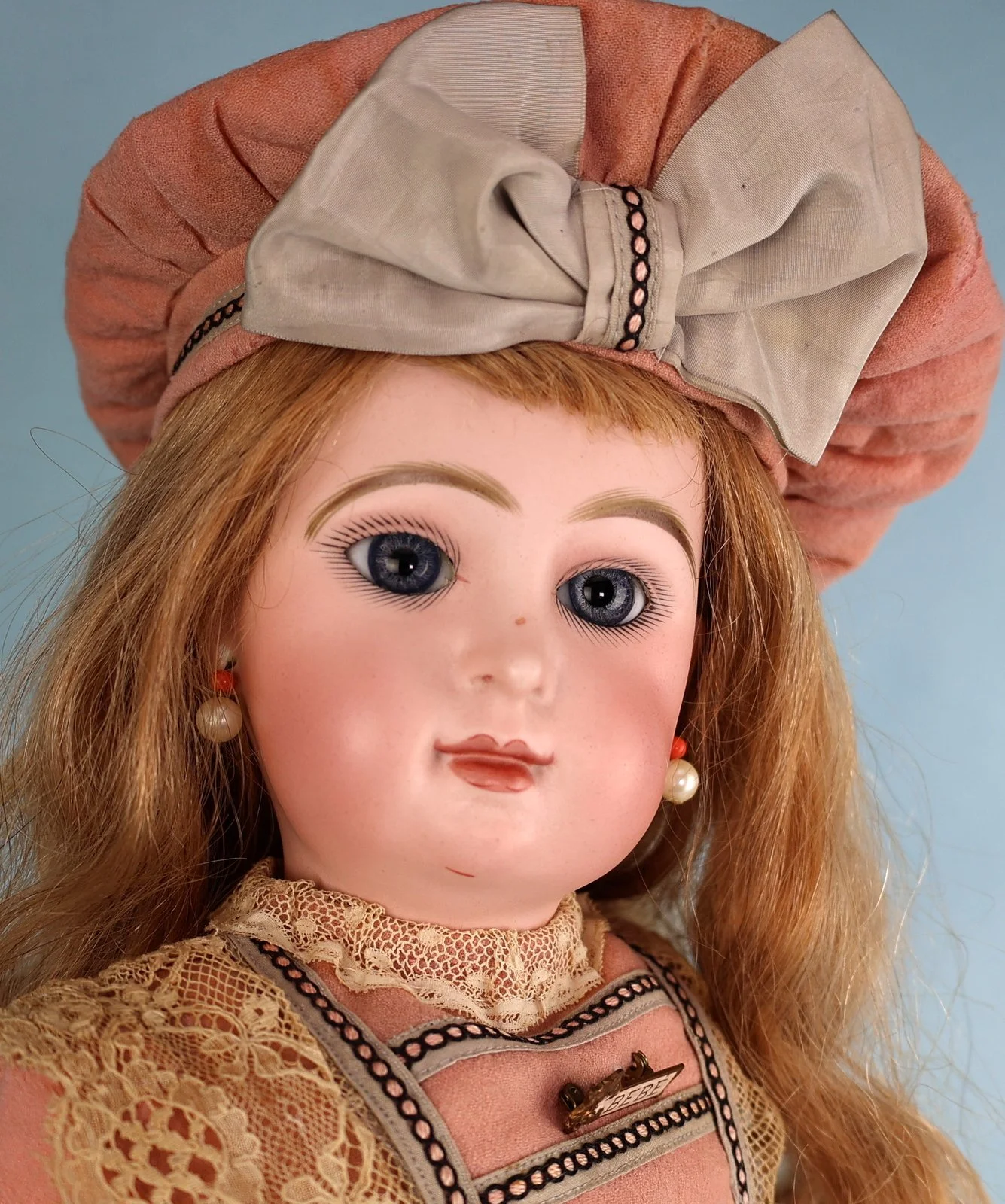There are doll artists and doll collectors, and then there are those, like Polly Mann, who was both.
Her work spans the history of modern doll collecting. Her early dolls often reproduced rare antiques, including Brus. Like all great artists, she took her inspiration from those before her. Studying and recreating antique designs led Mann to design her own original dolls. If anything, she managed to improve on the old, traditional ideas for making dolls.
Archival photo of Polly Mann with her very early dolls, Colorado Springs Gazette-Telegraph Oct 27, 1963
She also was inspired by classic painters like Renoir and Diego Velázquez of Spain. Her Little Girl with Watering can, a tribute to Renoir, is as charming as the painting itself. Creating her own recipe for bisque allowed Mann to capture the delicate complexion of the little girl in the painting.
The two little girls inspired by Velázquez painting “The Meninas” (The Handmaidens) could have been the original models for the painting, so accurate are their wigs, coloring, and costumes.
Pinkie and Blue Boy, two other timeless paintings, have also been “brought to life” through Polly Mann’s unique talent. The great thing about Mann dolls is that they delight but also teach art history and culture.
Mann’s antique reproduction dolls, like her Bru done in the fifties, wear charming outfits, just like their antique predecessors. They often have thick, lush eyelashes and beautiful glass eyes. The antique reproductions with molded hair are so well done that they rival the classic replicas done by Emma Clear in the 40s.
Mann’s antique reproductions show the evolution of European bisque dolls but are also important collectibles in themselves.
Yet, there is even more to Polly Mann than dollmaking. She was a passionate collector, and like Rembrandt, another great artist/collector, her treasures inspired her work. In studying the varied dolls of her collection, Polly Mann got ideas for all kinds of dolls. She was eager to learn and to collect and everything from vintage Christmas items to composition baby dolls to antique bisques. Her eclectic finds are doll eye candy, with something for everyone. More importantly, Mann brought the passion she had for collecting to her own artwork. Her dolls are important because they show us the wonderful places doll collecting can take us. A passion for dolls and toys has produced NASA engineers and astronauts, artists, haute couture designers, sculptors, and the awesome creations of Polly Mann.
About the Author: Ellen Tsagaris is an avid doll collector who has made dolls, priced dolls, repaired, dressed, and studied dolls. She has presented papers on dolls and their history at the Midwest Modern Language Association. Author of numerous articles on dolls, and Antique Trader contributor.
Author of two books about dolls, "Bibliography of Doll and Toy Sources," and "With Love from Tin Lizzie; A History of Metal Heads, Metal Dolls, Mechanical Dolls, and Automatons."

